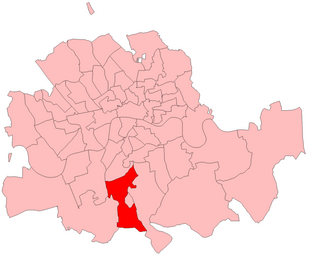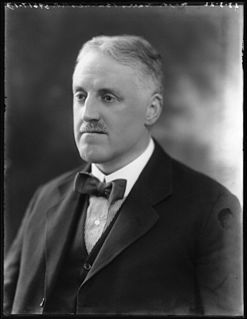Related Research Articles

Westbury was a parliamentary constituency in Wiltshire from 1449 to 2010. It was represented in the House of Commons of England until 1707, and then in the House of Commons of Great Britain from 1707 to 1800, and finally in the House of Commons of the Parliament of the United Kingdom from 1801 until 2010.
Berwick and Haddington was a constituency of the House of Commons of the Parliament of the United Kingdom from 1918, when it replaced the separate Berwickshire and Haddingtonshire constituencies, until it was renamed Berwick and East Lothian for the 1950 general election. It elected one Member of Parliament (MP), using the first-past-the-post voting system.
Liverpool Exchange was a borough constituency within the city of Liverpool in England, centred on Liverpool Exchange railway station. It returned one Member of Parliament (MP) to the House of Commons of the Parliament of the United Kingdom, elected by the first past the post system.

Norwood was a parliamentary constituency in south London which returned one Member of Parliament (MP) to the House of Commons of the Parliament of the United Kingdom by the first past the post system.
Leek was a parliamentary constituency in Staffordshire which returned one Member of Parliament (MP) to the House of Commons of the Parliament of the United Kingdom.
Kingston or Kingston-upon-Thames was a parliamentary constituency which covered the emerging southwest, outer London suburb of Kingston upon Thames and which existed between 1885 and 1997 and returned one Member of Parliament (MP) to the House of Commons of the UK Parliament. The Conservative candidate won each election during its 112-year existence.
Liverpool Everton was a borough constituency represented in the House of Commons of the Parliament of the United Kingdom. It elected one Member of Parliament (MP) by the first past the post system of election.
Liverpool West Toxteth was a parliamentary constituency represented in the House of Commons of the Parliament of the United Kingdom. It elected one Member of Parliament (MP) by the first past the post system of election.

Major Harry Barnes was a radical United Kingdom Liberal Party politician, architect and author specialising in housing and town planning.
The 1925 Eastbourne by-election was a parliamentary by-election for the British House of Commons constituency of Eastbourne, Sussex on 17 June 1925.
The 1925 Galloway by-election was a by-election held for the British House of Commons constituency of Galloway in Scotland on 17 November 1925. The by-election was won by the Unionist Party candidate Sidney Streatfeild.
The 1929 Kilmarnock by-election was a by-election held on 27 September 1929 for the British House of Commons constituency of Kilmarnock in Ayrshire.
The 1940 East Renfrewshire by-election was a parliamentary by-election held on 9 May 1940 for the British House of Commons constituency of East Renfrewshire in Scotland.
The 1930 East Renfrewshire by-election was a parliamentary by-election held on 28 November 1930 for the British House of Commons constituency of East Renfrewshire in Scotland.
The 1935 Combined Scottish Universities by-election was a by-election held from 17 to 22 June 1935 for the Combined Scottish Universities, a university constituency of the British House of Commons.

The 1938 Combined Scottish Universities by-election was a by-election held from 21 to 25 February 1938 for the Combined Scottish Universities, a university constituency of the British House of Commons.

The 1936 Combined Scottish Universities by-election was a by-election held from 27 to 31 January 1936 for the Combined Scottish Universities, a university constituency of the British House of Commons.
The 1927 Combined Scottish Universities by-election was a by-election held from 26 to 29 April 1927 for the Combined Scottish Universities, a university constituency of the British House of Commons.

John William Wilson, PC, JP was a British chemical manufacturer and politician who served for 27 years as a member of parliament (MP), initially as Liberal Unionist and then as a Liberal.

The Wandsworth by-election was a Parliamentary by-election. It returned one Member of Parliament (MP) to the House of Commons of the United Kingdom, elected by the first past the post voting system.
References
- ↑ Craig, F. W. S. (1983). British parliamentary election results 1918-1949 (3 ed.). Chichester: Parliamentary Research Services. ISBN 0-900178-06-X.
- ↑ Craig, F. W. S. (1983). British parliamentary election results 1918-1949 (3 ed.). Chichester: Parliamentary Research Services. ISBN 0-900178-06-X.
- ↑ Craig, F. W. S. (1983). British parliamentary election results 1918-1949 (3 ed.). Chichester: Parliamentary Research Services. ISBN 0-900178-06-X.